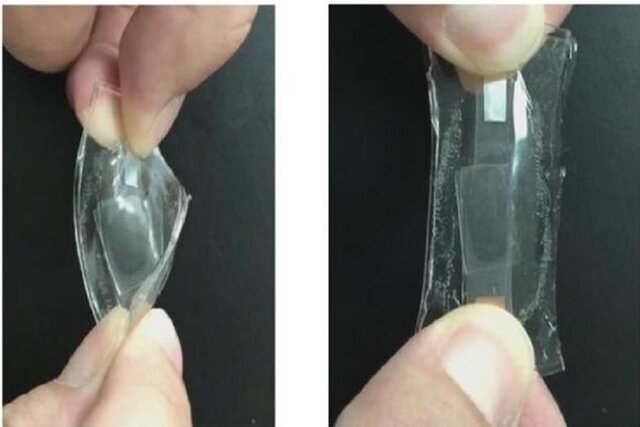
[ad_1]

Researchers at Nanjing University of Posts and Telecommunications in China have developed a highly flexible lithium-ion battery that can be stretched up to 5,000 percent.
Researchers at the university created the flexible battery using elastic materials.
The researchers said in a press release that the battery’s performance was not affected even after 70 charge and discharge cycles.
When it comes to batteries, everyone thinks of rigid parts that are difficult to puncture or bend. Flexibility is not a property associated with batteries. However, as the world of electronics changes with each passing day, and more flexible devices such as foldable phones and foldable screens become commonplace, the batteries that power them also need to change radically.
Previous attempts to create flexible batteries have involved using conductive fabrics or using processes such as origami, where rigid components are folded into specific shapes and can be stretched to certain limits.
However, the Chinese research team, under the guidance of Professor Wen Yonglai of Nanjing University of Posts and Telecommunications, hopes to create a flexible battery in which all the components of the battery are stretchy, making the battery truly flexible so that it can be used anywhere.
Flexible battery structure
The researchers first spread a thin layer of conductive paste containing silver nanowires, carbon black, and lithium-based cathode and anode materials on the board. They then coated the top of the conductive paste with a layer of polydimethylsiloxane, a highly flexible material used to make contact lenses.
Then, on top of this layer, they added lithium salt, a highly conductive liquid, and all the other ingredients needed to make a widely stretchable polymer. The layer was then activated with light, causing it to become solid and capable of not only transporting lithium ions but also stretching.
The researchers placed another layer of electrodes on top of this structure and then placed the entire assembly in a protective enclosure.
The researchers say the flexible batteries made using this method can be stretched to 5,000 percent of their original length.
When using a liquid electrolyte, the researchers were also able to increase the average battery charge capacity to six times the normal average, the press release said.
This stretchable battery also exhibited more stable capacity during charge and discharge cycles.
The researchers also built other prototypes using the same electrolyte while adding solid electrodes to the battery components. The team found that the polymer electrolyte achieved more stable performance even after 1,000 cycles.
Liquid electrolyte batteries typically experience a 16% drop in electrolyte performance over the first 30 cycles, while solid polymer electrolyte batteries experience only a 1% drop in performance over the same number of cycles.
The researchers admit that the battery is still not perfect and needs further improvement. However, the successful implementation of this concept paves the way for the use of batteries in flexible devices.
The results of this study were published in the journal ACS.
[ad_2]
Source link


